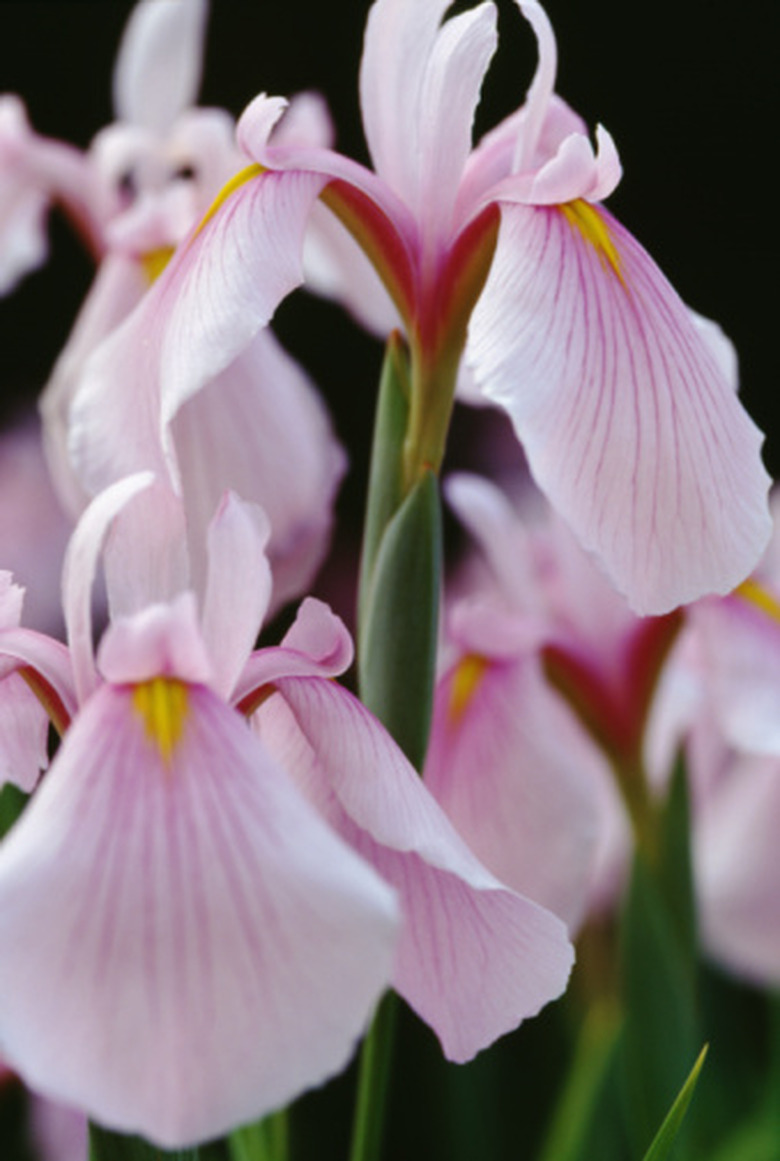Do Irises Need To Be Protected From Frost?
Iris blooms make every ounce of care worth the effort. They offer such a wide range of colors and shape of flower that planting irises can be quite the gardening adventure. Most irises are surprisingly low-maintenance during the growing season, but all irises that grow in climates with cold winters will benefit from some form of winter protection.
Preparing for Winter
Preparing for Winter
While irises are low-maintenance, they require some minor care before winter sets in, if they are expected to provide those same big blooms next year. End-of-season care is also good for the health of the plant, providing an opportunity to inspect the iris bed in search of disease, dying plants or plants that need to be divided. After flowering, trim flower stalks as close to the ground as possible. This will give the plant one less part to worry about as its stores energy for winter. It's important to cut back the foliage or remove it once it's faded to yellow or brown. Cut it back to 6 inches in the fall while it's still green or wait until it's yellow or brown.
Mulch
Mulch
Mulch is one of the simplest, most effective ways to protect the iris root system during frigid winter temperatures. Newly planted irises and established iris beds both benefit from a thick layer of mulch to protect the roots. Select pine needles, straw, leaves, compost or even just additional soil from the garden to make a 4- to 6-inch layer of mulch around the base of the plant, recommends the University of Minnesota Extension. Remove some of the mulch from around the new plants in spring as soon as possible–such as when the snow begins to melt–and the rest of the mulch once the garden has dried out.
Dividing Irises
Dividing Irises
If established irises need to be divided, do so in midsummer, about four to six weeks after all blooms have faded. The plants need time to establish a root system before the winter, reports the North Carolina State University Extension. Those irises will probably put up new growth before winter sets in, but their root systems won't be strong enough to resist freeze/thaw cycles that may occur during the winter and early spring. Mulch newly divided irises in late fall.
Freeze/Thaw Cycles
Freeze/Thaw Cycles
Freeze/thaw cycles can wreak havoc on bulbs and tubers that overwinter in the garden. During these cycles, the already frozen ground thaws briefly, then freezes again, causing bulbs and tubers–irises, included–to be literally thrown from their beds. Of course, they can't survive this type of exposure, so a thick layer of mulch will help protect them.
References
- Schreiner's Iris Gardens: How to Grow and Care for Irises
- "University of Minnesota Extension"; Iris for Northern Gardens; Deborah L. Brown; 2011
- "Iris Club of Southeast Michigan"; Bearded Iris Cultural Directions; Ann Cline
- "North Carolina State University Extension"; Bearded Iris for the Home Landscape; Erv Evans
